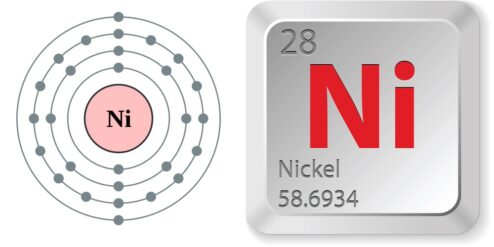Introduzione: Oatmeal is a popular breakfast choice for many people due to its high nutritional value and potential health benefits. However, like many other foods, oatmeal contains trace amounts of various minerals, including nickel. The amount of nickel in oatmeal, as well as its potential health impacts, is a topic of interest for many health-conscious individuals. This article aims to shed light on the nickel content in oatmeal and its implications for human health.
Understanding the Composition of Oatmeal
Oatmeal is made from oats, a type of cereal grain known for its nutritional benefits. It is rich in fiber, protein, and various vitamins and minerals, including B-vitamins, iron, magnesium, and zinc. Oats also contain trace amounts of various other minerals, including nickel. Nickel is a naturally occurring element found in the earth’s crust. It is absorbed by plants from the soil and thus enters our food chain.
Nickel in Foods: An Overview
Nickel is present in varying amounts in most foods. It is more concentrated in plant-based foods, including nuts, grains, and vegetables, due to their direct contact with the soil. The amount of nickel in food can also be influenced by cooking methods and the use of nickel-containing cookware. Despite its ubiquity, the nickel content of food is generally not a concern for most people. However, some individuals may be sensitive to nickel and may experience adverse reactions from consuming foods high in this mineral.
Quantifying Nickel Content in Oatmeal
The exact amount of nickel in oatmeal can vary depending on several factors, including the type of oats, the soil in which they were grown, and the processing methods used. However, research has shown that the nickel content in oatmeal is generally low. According to the United States Department of Agriculture (USDA), the average nickel content in oatmeal is approximately 0.13 mg per 100g serving. This is well within the acceptable daily intake of nickel for adults, which is set at 0.3 mg per day by the World Health Organization (WHO).
The Impact of Nickel on Human Health
Nickel is an essential trace element for many organisms, including humans. It plays a role in various metabolic processes and is necessary for the proper functioning of certain enzymes. However, excessive intake of nickel can have adverse health effects. In sensitive individuals, high nickel intake can cause symptoms such as skin rashes, gastrointestinal discomfort, and in severe cases, lung and nasal cancer. It’s important to note that these effects are generally associated with prolonged exposure to high levels of nickel, far beyond what one would typically consume in food.
How to Reduce Nickel Intake from Oatmeal
While the nickel content in oatmeal is generally low, individuals with nickel sensitivity may wish to further reduce their intake. This can be achieved by choosing oats grown in low-nickel soils or by opting for processed oats, which tend to have lower nickel content due to the removal of the outer husk. Cooking oatmeal in stainless steel or glass cookware, rather than nickel-containing cookware, can also help to reduce nickel exposure.
Conclusioni: In conclusion, while oatmeal does contain trace amounts of nickel, the levels are generally low and well within the acceptable daily intake for adults. For most people, the nutritional benefits of oatmeal far outweigh any potential risks associated with its nickel content. However, individuals with nickel sensitivity should be aware of this issue and may wish to take steps to reduce their nickel intake from oatmeal.
Per approfondire:
- USDA FoodData Central: An online database providing access to nutrient profiles for a wide variety of foods, including oatmeal.
- World Health Organization (WHO) Guidelines for Nickel Intake: Provides information on the acceptable daily intake of nickel for adults.
- National Institutes of Health (NIH) – Nickel in Diet: Offers comprehensive information on the role of nickel in human health and its presence in foods.
- American Contact Dermatitis Society – Nickel Allergy: Provides information on nickel sensitivity and strategies for reducing exposure.
- European Food Safety Authority – Scientific Opinion on Nickel in Food: An in-depth report on the presence of nickel in various foods and its potential health impacts.


